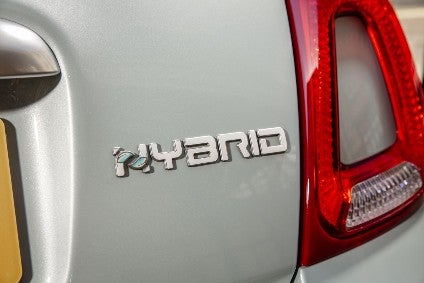
While competitors wrack their brains trying to find ways to make money selling tiny cars, FCA just gets on with it. Even after the worst year in living memory, about 150,000 Fiat 500s will be sold Europe-wide in 2020. Thanks to luck and skill, every one of those will likely be profitable too, including the newest variant, a mild hybrid.
The luck part of the equation is FCA’s (un)usual strategy of allowing many of its models to have exceptionally long life cycles. Examples are everywhere, with mixed results. Applied to the Fiat Panda and 500, the idea has worked. And for Dodge too. The Charger is only months away from a decade of production, while the new-for-2021 Challenger SRT Super Stock – all 807 glorious horsepower of it – is another example of FCA’s genius at wringing ever more money out of a 12 year old car.
Wishing classic status upon some cars doesn’t always work, as the ten-year old Giulietta shows: whoever at Stellantis gets put in charge of attempting to rejuvenate Alfa Romeo will have a lot of work to do. Similarly, even though the Fiat 500 is still a big seller, at some point it will have to be replaced, presuming that there is an intention to continue offering affordable A segment Fiats.
We still don’t know what will happen when the 500 becomes either too old to have continued sales appeal or the cost of legislation-mandated updates eventually do for it. The plan could be a phase out by perhaps 2022-2023, the hope being that by then the EV-only New 500 is delivering decent volume and margins. The other possibility is to offer a PHEV version of the just-launched hatchback and convertible to succeed the new-for-2020 mild hybrid powertrain in a few years’ time.
Whatever happens, the company which FCA intends to merge into will have a line-up of city cars which, presuming the European market has a decent 2021, should see some 350,000+ combined units of the 500, New 500 and Panda sold in the region. Last year, the total was close to 400,000 so it’s entirely possible.
The volume which the 500 sells in, even in a bad year, explains why FCA went to the trouble of re-engineering such an old car to take a new powertrain. There have been all manner of engines since the launch in 2007, with the rev-happy two-cylinder petrol units now long gone and the 1.2-litre four-cylinder soon to vanish too.

US Tariffs are shifting - will you react or anticipate?
Don’t let policy changes catch you off guard. Stay proactive with real-time data and expert analysis.
By GlobalDataThe company needs the lower CO2 average of the mild hybrid to prevent it being hit with big fines from the European Commission next year. Which is also the reason for the arrival of the New 500. If the electric hatchback and cabrio lose money, then that’s probably OK compared to the financial hit from the EC, even including the credits which FCA has agreed to buy from Tesla under a permitted ‘Manufacturer Pools’ arrangement.
The mild hybrid, which is badged as a Hybrid, runs a special version of FCA’s FireFly 1.0-litre three-cylinder engine. So as to keep costs down, there are neither four valves per cylinder nor turbocharging, and combined with the 12-volt BSG (Belt-integrated Starter Generator), outputs are 51 kW (70 HP) and 92 Nm. The sole transmission is a six-speed manual which FCA calls C514.
The BSG system is mounted directly to the engine and turned by the same belt which drives the auxiliaries. Energy harvested during braking and deceleration is stored in an 11 Ah lithium battery which is used for both restarts and bursts of acceleration.
The engine will switch off at speeds below 19 mph (30 km/h) if the driver shifts into neutral, prompted by the flashing of an indicator light in the instrument panel. In coasting mode, the car runs on the lithium battery. It doesn’t take long to make a habit of noticing the flickering light as you slip the car out of gear and enjoy the feeling of getting some free power. The S&S isn’t the smoothest but it’s not bad and for anyone who doesn’t like start-stop systems, well they can of course deactivate it.
The new triple might not sound as great as the old 875 cc two-cylinder engine, or even the four-cylinder diesel but the mild hybrid does have a certain sparkle of its own. You need to give it some revs to get much action but doing that likely sends the claimed 30% improvement in efficiency out the window, or rather the tailpipe. Nonetheless, there are tax savings no matter how an owner treats the throttle pedal.
For a car that’s been around since 2007, the 500 somehow doesn’t feel past its best before date. In fact, the Cinquecento quickly becomes endearing, in a way that a more advanced alternative such as say, the new Honda e, doesn’t seem to. Call it a reminder of how involving small cars used to be, and the fact that the 500 is still properly tiny in a class where others are almost bridging the A and B segments.
As a stop-gap to a future where little EVs go further on a single charge and cost less than they do now, the new (Mild) Hybrid probably has a few years of good volume ahead of it. Along with some decent earning power for its maker.
The Fiat 500 Mild Hybrid starts from GBP13,020 on-the-road. Trim levels are Pop, Lounge, Sport, Star and Rockstar, while there is also a fully loaded Launch Edition which costs GBP17,150. Emissions are as low as 88 g/km and average consumption is 53.3 mpg (WLTP Combined).



